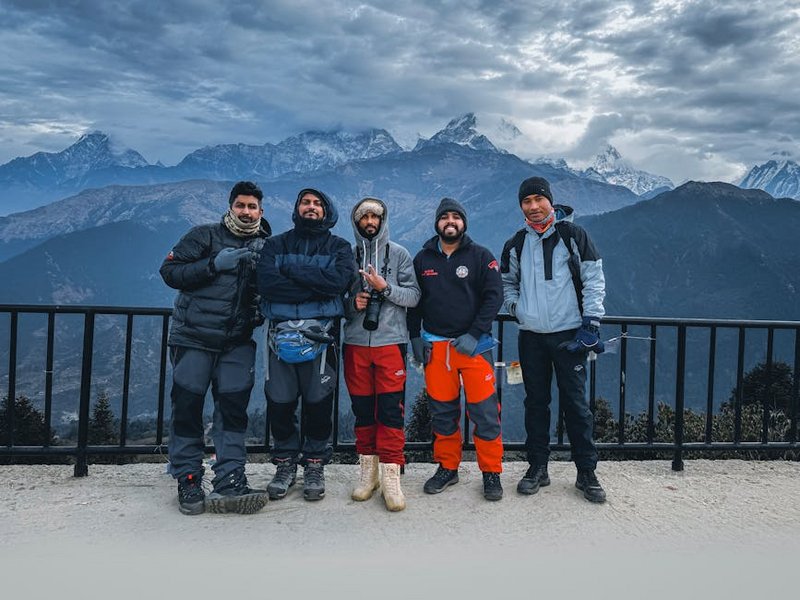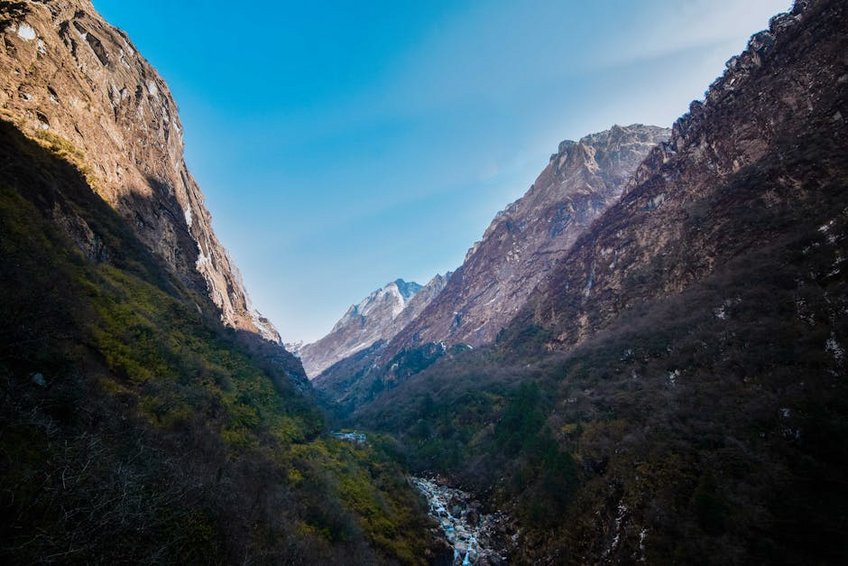Pokhara Annapurna View: Your Ultimate Guide to Nepal’s Himalayan Panorama
Experiencing the Pokhara Annapurna view is one of the most breathtaking moments you’ll ever have in travel. Nestled in central Nepal, Pokhara serves as the gateway to the Annapurna mountain range, offering some of the world’s most spectacular Himalayan vistas without requiring strenuous trekking. The city’s unique geography places you right at the foot of these majestic peaks, where you can witness sunrise painting the snow-capped mountains in golden hues from multiple vantage points around Phewa Lake. Whether you’re an avid photographer, nature lover, or simply seeking spiritual renewal, the Pokhara Annapurna view delivers an unforgettable experience that stays with you long after you return home. The combination of accessible viewpoints, comfortable accommodations, and the sheer scale of the Himalayan panorama makes this destination perfect for travelers of all ages and fitness levels.
Pokhara Annapurna View Essential Information
Understanding the geography and viewing conditions will significantly enhance your Pokhara Annapurna view experience. The Annapurna massif includes several peaks over 7,000 meters, with Annapurna I standing as the tenth highest mountain globally at 8,091 meters. Pokhara’s elevation at approximately 800 meters creates a dramatic vertical contrast with the mountains that rise just 30 kilometers away. The best views typically occur during the dry seasons when visibility is clearest, though even cloudy days can offer magical moments when the clouds part unexpectedly. You’ll want to plan your visit during optimal weather windows while understanding that mountain weather can be unpredictable. The cultural context of these mountains as sacred spaces in local traditions adds another layer of meaning to your viewing experience.
Understanding the Mountain Geography – What You Need to Know
- The Annapurna range includes four main peaks: Annapurna I (8,091m), II (7,937m), III (7,555m), and IV (7,525m), plus numerous smaller peaks
- Phewa Lake reflects the mountains perfectly on calm mornings, creating iconic photo opportunities
- Viewing distances range from 30-50 kilometers depending on your specific location in Pokhara
- Budget travelers can manage on $25-40 USD daily with hostel accommodation, local meals, and public transportation
- Mid-range visitors should budget $60-100 USD daily for comfortable hotels with mountain views, restaurant meals, and private transportation
- Luxury experiences range from $150-300+ USD daily featuring premium resorts with panoramic views, guided tours, and fine dining
- Nepal Tourism Board Official Website
- Lonely Planet Pokhara Travel Guide
Optimal Viewing Conditions and Timing
You’ll achieve the best Pokhara Annapurna view during specific times and weather conditions. Early mornings typically provide the clearest visibility, as afternoon clouds often obscure the peaks during warmer months. October through December offers the most reliable viewing conditions, with January and February providing crystal-clear skies though colder temperatures. The pre-monsoon period from March to May can also yield excellent visibility, particularly in the mornings before clouds build up. Monitoring weather forecasts and being flexible with your schedule will greatly increase your chances of experiencing the mountains in their full glory. Many hotels even offer wake-up calls if the mountains become visible unexpectedly during the night.

Pokhara Annapurna View Planning Your Trip
Strategic planning ensures you maximize your Pokhara Annapurna view experience while accommodating your travel style and budget. Most visitors spend 3-4 days in Pokhara to allow for multiple viewing opportunities across different locations and times of day. The city offers accommodation options ranging from budget guesthouses to luxury resorts, many specifically designed to capitalize on mountain views. You’ll want to consider the season of your visit carefully, as weather patterns dramatically affect visibility and overall comfort. Booking accommodations with balcony or terrace views can enhance your experience tremendously, allowing you to enjoy the mountains from your room. Transportation within Pokhara is readily available through taxis, rental bicycles, or walking, making viewpoint hopping relatively straightforward.
Best Time to Visit for Annapurna Views
The optimal viewing period for Pokhara Annapurna view occurs during the dry seasons from October to December and February to April. October and November typically provide the clearest skies and most comfortable temperatures, with daytime readings around 20-25°C (68-77°F) and minimal precipitation. The winter months of December and January offer incredibly clear visibility but colder temperatures, especially at night, dropping to 5-10°C (41-50°F). Spring months from March to April bring warmer weather and blooming rhododendrons but increased chance of afternoon clouds. The monsoon season from June to September generally provides poor visibility with almost constant cloud cover, though occasional clear moments can occur after rains.
Budget Planning and Costs
Essential Preparation Checklist
Proper preparation significantly enhances your Pokhara Annapurna view experience. Pack layered clothing as temperatures vary dramatically between early morning viewings and daytime exploration. Include warm layers for pre-dawn viewings even during warmer months, as mountain viewpoints can be surprisingly chilly. Quality binoculars will bring the mountain details closer, while a good camera with zoom lens is essential for capturing the scale of the Himalayas. Comfortable walking shoes are necessary for accessing some viewpoints, and altitude awareness is important though Pokhara itself sits at comfortable elevations. Ensure you have necessary medications and travel insurance, and consider downloading offline maps and weather applications to track viewing conditions.
Pokhara Annapurna View Top Attractions and Activities
The Pokhara Annapurna view experience extends beyond simple observation to include numerous activities and attractions that complement the mountain vistas. Sarangkot viewpoint remains the most famous destination for sunrise views, but several other locations offer equally impressive perspectives with fewer crowds. Boating on Phewa Lake during early morning provides a unique water-level view of the mountains reflected in the still waters. Various hiking trails around Pokhara valley offer progressively changing perspectives of the Annapurna range, allowing you to experience the mountains from multiple angles. Adventure activities like paragliding provide aerial views of both the mountains and lake, creating truly unforgettable perspectives that few visitors experience.
Must-See Highlights and Viewpoints
Several key locations deliver exceptional Pokhara Annapurna view experiences that every visitor should prioritize. Sarangkot (1,600 meters) stands as the most popular viewpoint, requiring a 45-minute drive from lakeside followed by a short hike to the summit viewing platform. The World Peace Pagoda on the south shore of Phewa Lake offers panoramic views across the lake to the mountains, accessible by boat and hike combination. Fewa Hotel’s rooftop provides excellent lakeside viewing without leaving the city center, particularly during breakfast hours. The Australian Camp hike delivers stunning mountain views within a relatively easy 2-3 hour trek from nearby villages. Each location offers different perspectives and photographic opportunities throughout the day.
Hidden Gems and Local Favorites
Beyond the famous viewpoints, several lesser-known spots provide equally impressive Pokhara Annapurna view experiences with more intimacy and fewer tourists. The village of Astam offers a traditional Nepalese community experience with breathtaking mountain views, accessible via a one-hour drive from Pokhara. Rupa Lake, located southeast of Pokhara, provides serene reflections of the mountains without the crowds of Phewa Lake. The hiking route from Naudanda to Sarangkot reveals constantly changing perspectives throughout the 3-4 hour walk. Local tea shops along the hillsides often have terrace views that rival the official viewpoints, offering the chance to enjoy the scenery with a cup of authentic Nepalese tea away from the tourist crowds.
Pokhara Annapurna View Practical Travel Information
Navigating Pokhara and accessing the best Pokhara Annapurna view locations requires understanding the local transportation options and accommodation landscape. The city is well-developed for tourism, with numerous hotels specifically designed to capitalize on mountain views. Transportation to viewpoints typically involves taxis or organized tours, though some locations are accessible by local buses or rental scooters. The compact nature of Pokhara’s tourist area makes walking between lakeside establishments convenient, while longer distances require motorized transport. You’ll find ATMs, currency exchange, and tourist services readily available throughout the lakeside area, though carrying some cash remains advisable for remote viewpoint vendors and transportation.
| Transportation Type | Key Features | Price Range (USD) |
|---|---|---|
| Taxi to Viewpoints | Private door-to-door service, ideal for early morning viewings | $15-25 round trip |
| Local Bus | Authentic experience, limited schedules, crowded | $1-2 per journey |
| Scooter Rental | Maximum flexibility, self-guided exploration | $8-15 daily |
| Organized Tours | Guided experience, includes multiple viewpoints | $25-50 per person |


